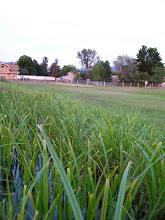Indian history dates back thousands of years; encompassing many dynasties and wars. The region’s first induction into the international spotlight centered on the spice trade. Yet it was not until 1497, when Vasco da Gama of Portuguese became the first person to circumnavigate around Africa to India, that India's spices truly became a European icon. This new trade route opened the door for increased trade in India. By 1764, the East India Company ruled the country and enjoyed a complete monopoly on Indian trade. In fact, it was not until after WWII that India secured its independence from a war-wearied Britain.
Since independence, India has become increasingly globalized. Today, India boasts the world’s largest democracy, the second highest population count in the world, the world’s twelfth largest economy, as well as the thirteenth fastest growing economy in the world. In light of these national achievements, India is even petitioning to be included as a permanent member of the UN Security Council.
Like western democracies, the Constitution of India guarantees its citizens the rights of equality and freedom of religion. Yet these rights are not always evident in practice. While religious violence and inequality were historically present in India, their continued presence in the country is disturbing.
Perhaps the best known example of Indian inequality would be the Caste System. In essence, the system was a method of stratifying society into four groups. Once born into a particular caste, individuals cannot change castes - unlike in western societies, for instance: where one can move from the lower to the middle class. Historically, those in the lowest caste, the Untouchables, experienced severe discrimination and inequality. During British colonization, the Caste System was unofficially embraced by the governing authorities. The British equated the Caste System to their own system of classes, despite the fact that the Indian Caste System is based upon birth and not social and economic standing. Under their rule, the British conducted a census of India using their faulty understanding of the Caste System as its structural basis. In a way, this census only served to legitimize and further the discriminatory and unjust attributes of the Caste System.
Upon independence, the brand new Republic of India banned discrimination based upon caste. Yet centuries of its presence as well as the encouragement of the system during India’s colonial period have caused this caste-based discrimination and persecution to last. The World Bank estimates that 42% of India’s population falls below the world poverty level - over one third of which are Dalits (formally known as Untouchables).
Religious violence has also had a long history in India, yet its prevalence today in India’s bolstering economy is disconcerting. Demographically, over 80% of India’s population is Hindu while Islam makes up approximately 13% and Christian about 3%. Historically, Hinduism was well established in India when Islam was first brought to the region via Arab traders around 600 A.D. Christianity was brought to India in the first century, however it did not experience significant growth until during British colonization. This was not without its problems though, in 1857 the Indian Rebellion broke out against the British because many Indian soldiers working for the East India Company feared forced conversions to Christianity. More recently, in 2002, the Godhra train was burned by group of Muslim extremists and fifty-three Hindus died as a result. This event erupted into many riots and massacres in which hundreds of Hindus and thousands of Muslims perished. While these two events stand out, many acts of religious violence regularly occur in India.
As a nation, India represents quite a success story: swiftly globalizing and rising out of its colonial roots to become an economic power. But does the nation hold a secure position in the developed world? Home to a third of the world’s impoverished, blatant inequality, and festering religious violence; India, in many ways, is still far behind the nations she would like to call her peers. As India’s economy and influence become increasingly globalized, these issues will also become increasingly apparent and impeding.
Click HERE to open the feedback tool.
Subscribe to:
Post Comments (Atom)

No comments:
Post a Comment